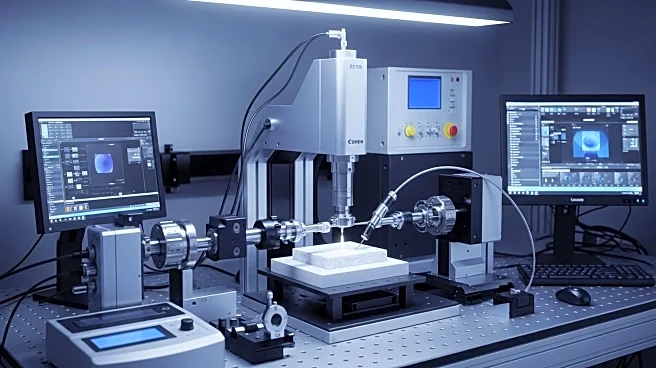What's Happening?
A recent study has explored the potential of using cement waste marble composites for nuclear radiation shielding. The research focuses on the absorption capabilities of these composites, which are made from discarded marble and locally sourced cement. The study highlights the environmental benefits of using recycled materials in construction, reducing waste and pollution. The composites are evaluated for their ability to attenuate gamma radiation, with a focus on the impact of filler size and weight percentage of CdO-Al2O3 particles. The research utilizes a scanning electron microscope and a NaI scintillation detector to assess the mass attenuation coefficients of the composites at various photon energies.
Why It's Important?
The development of effective radiation shielding materials is crucial for industries and medical fields that utilize nuclear technology. Traditional materials like lead, while effective, pose environmental and health risks due to their toxicity. The use of cement waste marble composites offers a safer and more sustainable alternative. By incorporating recycled materials, the composites not only provide effective radiation protection but also contribute to environmental conservation by reducing the need for raw material extraction and minimizing waste. This innovation could lead to advancements in construction materials, enhancing safety in medical and industrial applications.
What's Next?
Further research is needed to optimize the composition and particle size of the composites to maximize their radiation shielding capabilities. The study suggests that the use of nanoparticles could enhance the protective properties of the composites. Continued exploration in this area could lead to the development of new materials that offer superior protection against radiation, potentially transforming practices in industries that rely on nuclear technology. The findings could also influence regulatory standards for radiation shielding materials, promoting the adoption of more sustainable and effective solutions.
Beyond the Headlines
The study underscores the growing importance of sustainable materials in construction and technology. As industries seek to reduce their environmental impact, the use of recycled materials in innovative applications like radiation shielding could become more prevalent. This shift not only addresses environmental concerns but also opens new avenues for research and development in material science. The integration of advanced materials like nanoparticles into traditional composites could lead to breakthroughs in various fields, from construction to healthcare, highlighting the intersection of sustainability and technological advancement.










